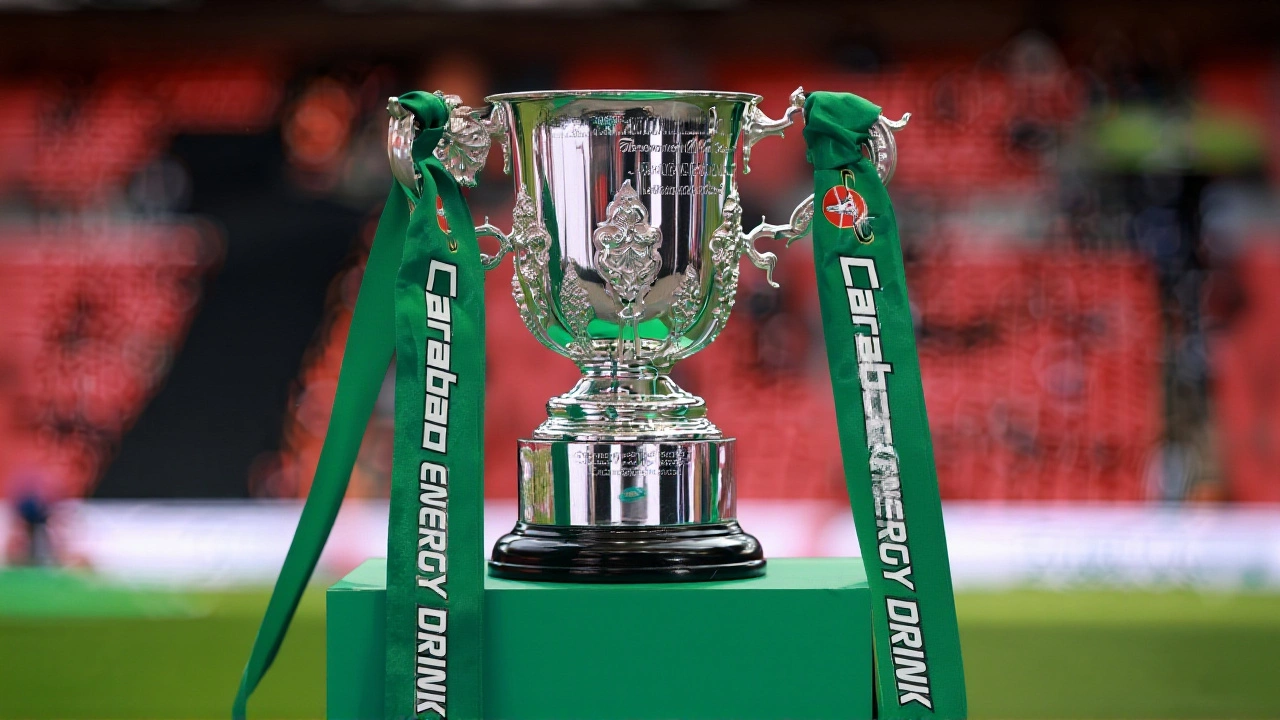The 2025-26 Carabao Cup second‑round draw is out, pitting Manchester United against League Two side Grimsby Town. The round also features all‑Premier League clashes, Championship vs. Premier League fixtures and several lower‑league giant‑kill opportunities. Newcastle United enter as defending champions after their 2025 triumph. Wembley will host the final on March 22, 2026.
Carabao Cup – Everything You Need to Know
When talking about Carabao Cup, the annual English knockout football competition currently backed by the Carabao energy‑drink brand and open to clubs from the top four tiers of the league system. Also known as English League Cup, it knockout tournament, a format where a single loss eliminates a team from further contention and football clubs, professional teams that compete in the English football pyramid. This blend of structure and participants makes the competition a unique showcase of depth in English football.
How the Carabao Cup Got Its Name and Shape
The competition started in 1960 as the League Cup, but sponsorship deals have turned it into a branding platform. Carabao Cup entered the scene in 2017 when the energy‑drink company signed a multi‑year deal, turning the trophy into a marketing vehicle while keeping the historic essence intact. The sponsor’s logo now appears on match‑day kits, stadium screens and official communications, showing how sponsorship, financial backing that provides prize money and media exposure directly influences the competition’s reach and prize pool.
Understanding the tournament’s format helps explain its appeal. The Carabao Cup follows a single‑elimination knockout tournament structure, starting with early rounds that pit Premier League giants against lower‑division football clubs. Each round cuts the field in half until two teams meet in the final at Wembley. Because there are no replays, every match is a do‑or‑die situation, which forces managers to rotate squads and gives younger players a chance to shine.
For smaller clubs, the Carabao Cup is a rare chance to face off against elite opposition. A League One side that reaches the quarter‑finals not only enjoys a financial windfall but also earns national headlines, boosting fan engagement and potential player transfers. Meanwhile, top‑flight clubs use the competition to test tactics, integrate new signings, and rest key players ahead of the grueling league schedule. This dual purpose—showcasing underdogs while serving as a strategic tool for bigger teams—creates a dynamic where every stakeholder gains something.
Media coverage has grown alongside the sponsorship. Live broadcasts on major networks, social‑media highlights, and behind‑the‑scenes documentaries bring the Carabao Cup into fans’ homes worldwide. The final, traditionally held in late February, becomes a festival of football where the winning club lifts the trophy in front of a packed Wembley Stadium. The event’s flash‑point status also fuels conversations about the competition’s place in the English football calendar, especially when European qualification spots are at stake.
Below you’ll find a curated collection of articles that dig into the Carabao Cup’s history, its impact on clubs of all sizes, and how sponsorship shapes modern football tournaments. Whether you’re a die‑hard fan, a casual observer, or someone curious about how a knockout format works, the posts ahead will give you fresh angles and practical insights into this uniquely British competition.
